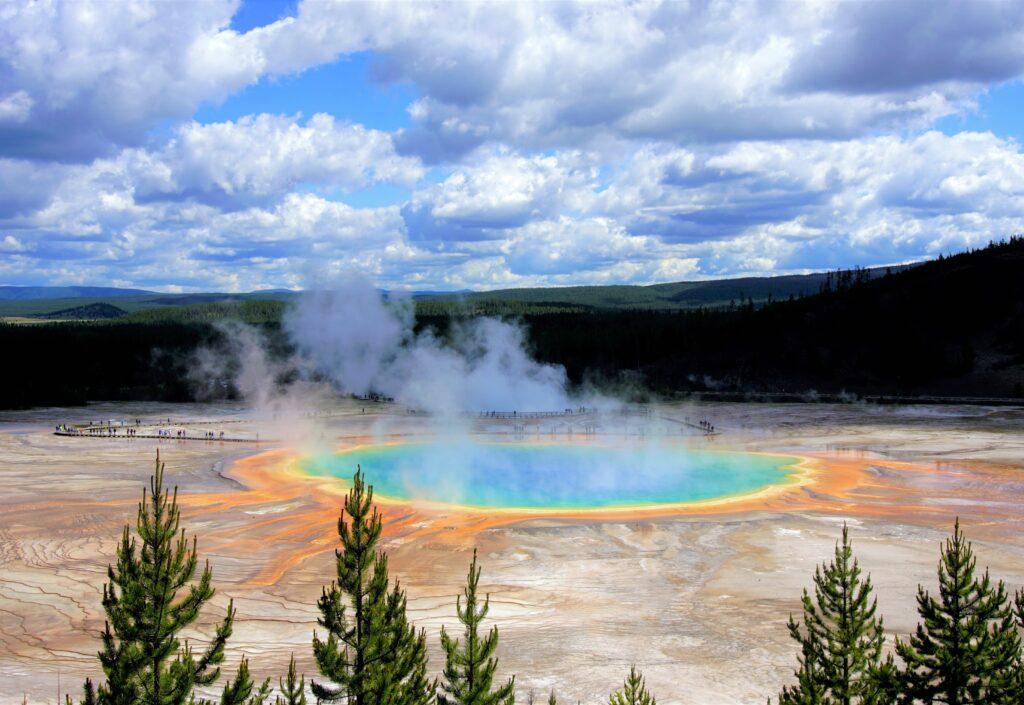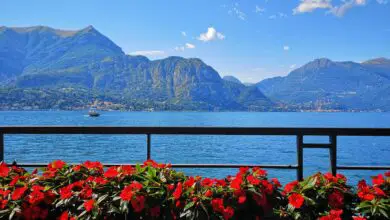Discovering the Wonders of Yellowstone National Park, USA 🌲🏞️
Unveiling Nature's Grandeur in America's First National Park

Introduction
Yellowstone National Park, located in the heart of the United States, stands as a testament to the country’s natural wonders. With its geothermal features, diverse wildlife, stunning landscapes, and rich cultural history, Yellowstone offers a unique and captivating experience for every visitor. In this article, we embark on a journey to uncover the marvels that make Yellowstone a must-visit destination, from the iconic geysers to the roaming bison herds and the breathtaking canyons.
Geothermal Wonders
Old Faithful: The Iconic Geyser
In the heart of Yellowstone National Park, Old Faithful stands as a testament to the awe-inspiring power of geothermal activity. This iconic geyser has captured the imagination of visitors for generations, earning its name by reliably erupting at regular intervals. Old Faithful shoots scalding water and steam high into the air, creating a mesmerizing display against the backdrop of the park’s pristine wilderness.
The eruption of Old Faithful occurs approximately every 90 minutes, making it a must-see spectacle for park-goers. As one of the most predictable geysers on the planet, it provides a rare opportunity for visitors to witness the Earth’s natural forces in action. Surrounding the geyser is a boardwalk that allows for a safe and up-close experience, letting you feel the heat and hear the bubbling before the climactic eruption.
For those eager to explore the geological wonders of Yellowstone, Old Faithful stands as an iconic introduction to the park’s geothermal wonders. Its accessibility and predictability make it a cornerstone attraction, setting the stage for the kaleidoscope of colors that await further exploration.
Grand Prismatic Spring: A Kaleidoscope of Colors
Venture deeper into Yellowstone, and you’ll discover the breathtaking Grand Prismatic Spring, a true marvel of nature’s artistry. This geothermal feature is the park’s largest hot spring, boasting an array of vibrant colors that seem almost otherworldly. From deep blues to striking oranges, the spring’s hues are a result of pigmented bacteria thriving in the varying temperatures of the water.
The vibrant colors of the Grand Prismatic Spring are best observed from the elevated vantage point of the park’s boardwalks. As you meander around the spring, the ever-changing palette creates a surreal experience. The spring’s intense colors contrast sharply with the surrounding landscape, providing a visual feast for those fortunate enough to witness its beauty.
Exploring the Grand Prismatic Spring offers a deeper understanding of the geological processes at play, showcasing the delicate balance of life within the extreme conditions of a hot spring. It is an essential stop for anyone seeking to immerse themselves in the captivating geothermal wonders of Yellowstone National Park.
Norris Geyser Basin: Unearthly Landscapes
For those with an adventurous spirit, the Norris Geyser Basin presents an unearthly landscape that evokes a sense of stepping onto another planet. As the hottest and most dynamic thermal area in Yellowstone, the basin is home to a diverse collection of geysers, hot springs, and fumaroles.
The landscape of the Norris Geyser Basin is ever-changing, with features appearing and disappearing over time. The steam rising from the numerous geothermal vents creates an ethereal atmosphere, adding to the basin’s mysterious allure. The vibrant colors of the bacterial mats and mineral deposits accentuate the surreal nature of this geothermal wonderland.
Exploring Norris Geyser Basin provides a unique opportunity to witness the raw power of the Earth’s geothermal forces. Trails wind through the basin, allowing visitors to marvel at the geysers’ eruptions and the bubbling hot springs. It’s an adventure into the heart of Yellowstone’s geothermal wonders, where the landscapes are as unpredictable as they are breathtaking.
Wildlife Encounters
Bison Herds: Roaming Giants of the Park
Yellowstone National Park is home to one of the most iconic symbols of the American West – the mighty bison. As you explore the park’s vast landscapes, you may encounter these roaming giants grazing in meadows or crossing the road with an air of quiet majesty. The Yellowstone bison herds are the last continuously wild, genetically pure herds in the United States, making them a living testament to the park’s commitment to preserving the natural heritage of the region.
Observing bison in their natural habitat is a thrilling experience, and Yellowstone provides ample opportunities for wildlife enthusiasts and photographers alike. The park’s Lamar Valley is often referred to as the “Serengeti of North America” due to its abundance of wildlife, including large bison herds. Keep a safe distance, use binoculars, and appreciate the raw beauty of these magnificent creatures as they move across the landscape, reminding visitors of the untamed wilderness that Yellowstone strives to protect.
Grizzly Bears and Wolves: A Glimpse into the Wild
Yellowstone’s vast wilderness is also home to some of North America’s most iconic predators – grizzly bears and wolves. Encounters with these elusive creatures offer a rare glimpse into the wild and untamed side of nature. Grizzly bears, with their powerful build and distinctive hump, may be spotted foraging for food or fishing in the park’s rivers. Wolves, known for their social structure and haunting howls, can often be observed in the Lamar Valley, showcasing the delicate balance of predator and prey in Yellowstone’s ecosystem.
Responsible wildlife viewing is paramount when it comes to these formidable creatures. Park guidelines emphasize the importance of maintaining a safe distance to protect both visitors and the animals. Binoculars or spotting scopes can enhance your experience while ensuring minimal impact on the wildlife. Witnessing the raw power and natural behaviors of grizzly bears and wolves in Yellowstone is an unforgettable experience, providing a deeper understanding of the delicate ecological relationships at play.
The Unique Yellowstone Cutthroat Trout
Beneath the park’s pristine waters flows a unique species that holds a special place in the ecosystem – the Yellowstone Cutthroat Trout. These native fish, with their distinctive red slashes beneath their jaws, are an integral part of the park’s aquatic habitats. As a vital component of the Yellowstone Lake and river systems, these trout play a crucial role in maintaining the delicate balance of the park’s aquatic ecosystems.
For anglers and nature enthusiasts, witnessing the Yellowstone Cutthroat Trout in its natural habitat is a rare and rewarding experience. The park offers opportunities for catch-and-release fishing in designated areas, allowing visitors to engage with this unique species while contributing to its conservation. The Yellowstone Cutthroat Trout serves as a reminder of the importance of preserving the park’s diverse ecosystems, ensuring that future generations can continue to appreciate the beauty of this remarkable fish in its native waters.






Facebook Comments